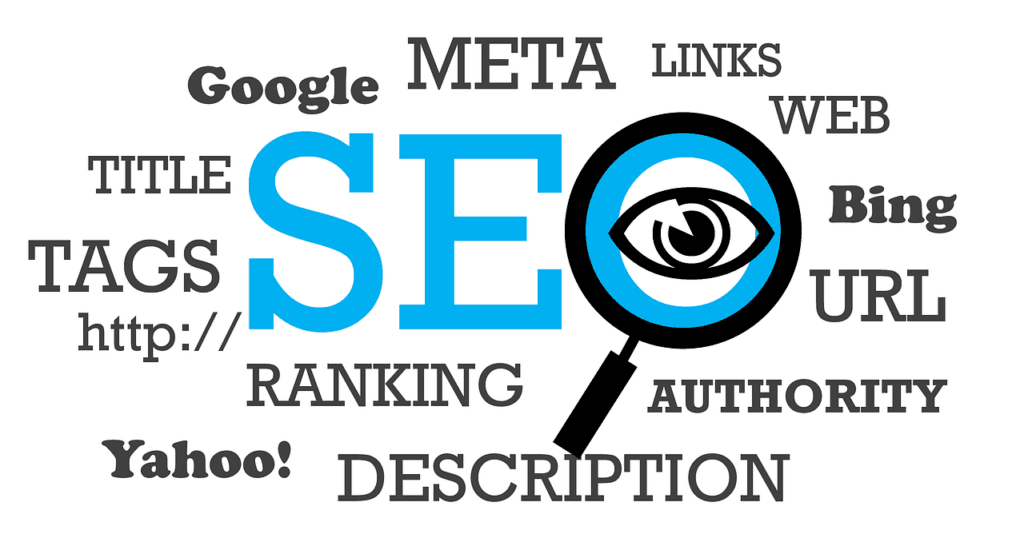In the fast-paced world of biotechnology, the rush of innovation and discovery is a constant. Biotech companies are at the forefront of groundbreaking research, unraveling mysteries that can transform human life and our understanding of the universe. However, in the echo chamber of advancements, one essential aspect often takes a backseat – the visibility of these innovations in the digital domain. Here, On-Page SEO becomes the unsung hero, ensuring that the discoveries and innovations reach not just scientific communities but resonate across the globe.
Unraveling the On-Page SEO Odyssey
On-Page SEO for biotech websites isn’t about fitting into the traditional frameworks of optimization. It is about carving a unique pathway where complex terminologies, rich data, and intricate research findings are made accessible, engaging, and visible to a diverse audience. It’s where science meets storytelling, data embraces accessibility, and innovations turn into global conversations.
In the realm of biotechnology, On-Page SEO transcends beyond keywords and meta tags. It’s about ensuring that every piece of content, every image, and every data set is optimized to echo the profound narrative of innovation that defines the biotech industry.
With biotech companies rapidly proliferating, the digital space is becoming crowded. In this context, effective On-Page SEO practices can be the distinguishing factor that amplifies the online presence of your innovations and research. It’s the tool that ensures your website isn’t just a repository of information but a dynamic platform engaging, informing, and interacting with a global audience.
Mastering the Art of Content Optimization
Scientific Data Translation
In biotech, the abundance of complex data is a treasure trove. However, the challenge is making this data accessible. Content optimization starts with translating scientific data into digestible formats. It’s not about diluting the essence but enhancing accessibility, ensuring complex insights are conveyed in a manner that resonates with both specialists and laymen.
SEO-Friendly Content Structure
Structuring content with SEO in mind is paramount. Utilizing H1, H2, and H3 tags strategically, ensuring keywords are placed effectively, and creating a content flow that guides the reader seamlessly are integral steps. Each section of content should be a blend of enriched information, infused with SEO elements to enhance visibility and engagement.
Chapter Two: Keyword Integration
Tailored Keyword Research
Keywords in biotech aren’t generic. They are as specialized as the field itself. Utilizing tools like SEMrush and Ahrefs, and complementing them with an understanding of the niche, helps in unearthing keywords that are tailored, relevant, and echo the specific innovations of the biotech world.
Natural Integration
Once identified, integrating these keywords naturally within the content ensures search engines and readers find relevance. It’s a subtle art, ensuring keywords enhance rather than obstruct the content’s richness and readability.
Enhancing User Experience
Mobile Optimization
With the advent of increased mobile usage, ensuring biotech websites are mobile-optimized isn’t optional—it’s essential. The design, layout, and content should adapt seamlessly to varied screen sizes, ensuring an uninterrupted, enriched user experience.
Page Load Speed
The impatience of the digital user is universal. Enhancing page load speed ensures users aren’t kept waiting. For biotech websites rich with data and images, optimizing elements to ensure rapid load times enhances user experience and SEO rankings.
Utilizing Multimedia Elements
Image Optimization
In the world of biotechnology, images, diagrams, and graphical representations are abundant. However, to make these elements SEO-friendly, optimization is crucial. Using alt text infused with relevant keywords, compressing image sizes without losing quality, and ensuring the formats are web-friendly can significantly boost SEO.
Videos and Interactive Media
Biotech content is often enriched with videos and interactive media to explain complex concepts. These elements should be optimized with SEO-friendly titles, descriptions, and tags. Transcripts and subtitles not only enhance accessibility but also provide additional space for integrating keywords.
Internal Linking Strategy
Strategic Link Placement
Internal linking is a powerful yet often overlooked aspect of On-Page SEO. In biotech content, strategically placing links to related articles or studies can enhance user engagement, reduce bounce rates, and improve page authority.
Anchor Text Optimization
Choosing the right anchor text infused with keywords but maintaining the content’s readability and flow is an art. It ensures that links are not just navigational elements but contribute to the SEO strategy.
Metadata Optimization
Title Tags and Meta Descriptions
Crafting compelling and SEO-friendly title tags and meta descriptions is fundamental. In biotech, where topics can be complex, ensuring these elements are concise, clear, and infused with keywords can significantly enhance click-through rates.
Structured Data
Structured data helps search engines understand the context of the content. Implementing schema markup especially for articles, research publications, and case studies, aids in rich snippet creation, enhancing visibility on search engine results pages (SERPs).
User Engagement and Content Quality
Engaging Content Creation
In the biotech sector, user engagement hinges on the ability to transform complex scientific concepts into content that captivates. It requires a meticulous blending of quality writing, visual elements, and interactive media to create pages that not only inform but engage. Every piece of content should be crafted considering the audience’s diversity, ensuring readability, comprehension, and engagement.
Real-Time User Interaction
Implementing elements that facilitate real-time interactions, such as comments, forums, and interactive Q&A sessions, can be instrumental. These platforms should be optimized with SEO best practices, turning user-generated content into a goldmine for organic search visibility.
Advanced SEO Techniques
AI-Powered SEO Tools
Leveraging AI-powered SEO tools can unveil deep insights, predictive analytics, and customized strategies for biotech websites. These tools analyze complex data sets, user behaviors, and emerging trends to refine SEO strategies, ensuring they are dynamic, responsive, and tailored.
Voice Search Optimization
As voice searches surge, optimizing biotech content for this trend is vital. It involves the integration of natural language, conversational keywords, and question-based queries. Each content piece should be evaluated and refined to resonate with the voice search audience, ensuring visibility and engagement.
Mobile SEO
Responsive Design
A responsive design that adapts to various screen sizes and orientations is non-negotiable. Given the technical and visual nature of biotech content, ensuring seamless accessibility, readability, and navigability on mobile devices enhances user experience and boosts SEO.
AMP (Accelerated Mobile Pages)
Implementing AMP can enhance the mobile user experience dramatically. It ensures that content, especially rich in data and images, loads swiftly on mobile devices. Every AMP page should be optimized, ensuring that while the load speed is rapid, the SEO elements are intact and effective.
Global SEO for Biotech
Multilingual Content
For biotech firms operating globally, multilingual content is pivotal. Each content piece should be optimized for different languages, considering the regional SEO nuances, keyword preferences, and cultural contexts. It ensures global visibility and engagement.
Geo-Targeting
Implementing geo-targeting SEO strategies ensures that content resonates with specific audiences worldwide. It involves tailoring SEO elements, including keywords, meta tags, and content, to align with the regional, cultural, and linguistic preferences of diverse audience segments.
Conversion Optimization
CTA Placement
In the world of biotech SEO, Call-to-Action (CTA) isn’t just about sales but engagement. Every CTA is meticulously crafted and placed, not just to direct a visitor to a subscription or a download but to invite them into a deeper engagement – be it reading a research paper, participating in a survey, or engaging in a forum. The optimization involves strategic placement, compelling language, and alignment with the content’s context to boost conversions.
User Behavior Analysis
Leveraging tools like Google Analytics and Hotjar to analyze user behavior helps refine CTAs and content placement. These insights indicate how users interact with content, helping to optimize elements for maximum engagement and conversions.
Security and Accessibility
SSL Certification
Security isn’t just a user concern but a ranking factor. Ensuring the website is SSL certified not only boosts the trust quotient but also SEO rankings. Every page, especially those handling user data and interactions, should be secured to enhance user trust and search engine preference.
Accessibility Optimization
Ensuring that content is accessible to people with disabilities isn’t just ethical but boosts SEO. It involves optimizing images, videos, and textual content to be accessible, ensuring a broader audience reach and compliance with legal standards like ADA and WCAG.
Content Updates and Refresh
Regular Content Audits
The dynamic nature of the biotech field necessitates regular content updates. Content audits should be a routine, ensuring each piece of content is current, relevant, and aligned with the latest SEO standards. Keywords, data, and visual elements should be updated to reflect current trends and search behaviors.
Content Refresh Strategies
Strategies for refreshing content involve updating data, integrating new keywords, and adding current information and findings. It ensures the content remains a live, engaging entity, attracting both search engines and users.
Technical SEO
Website Architecture
The architecture of a biotech website should be intuitive, facilitating easy navigation. A well-structured website ensures that search engines can crawl and index content efficiently and users can find information seamlessly. Every element, from URL structure to sitemap, should be optimized for maximum SEO benefit.
Page Speed Optimization
Optimizing elements like images, CSS, and JavaScript files, employing caching, and leveraging CDN (Content Delivery Networks) can reduce load time. In the data-rich world of biotech, ensuring pages load swiftly is pivotal for user experience and SEO.

Related: Check out our free SEO suite

Schema Markup and Rich Snippets
Implementing Schema Markup
The integration of schema markup helps search engines understand the intricate and specialized content of biotech websites. By providing explicit clues about the meaning of a page, schema markup aids in better categorizing and indexing, resulting in more targeted SEO.
Enhancing Rich Snippets
Rich snippets, enhanced by schema markup, offer quick insights, and additional information directly on the SERPs. In biotech, where content can be data-heavy, rich snippets can provide a concise overview, enhancing click-through rates and visibility.
Image and Video SEO
Alt Text and Titles
In the visual-rich world of biotech, each image and video becomes a conduit for SEO. Alt texts and titles should be optimized with keywords and descriptive language, ensuring that these visual elements contribute to the overall SEO narrative.
Multimedia Sitemaps
Creating specialized sitemaps for images and videos ensures that search engines index these elements effectively. Given their significance in explaining complex biotech concepts, optimized indexing amplifies content visibility and reach.
Mobile User Experience (UX)
Touchpoint Optimization
Biotech content accessed on mobile should offer intuitive touchpoints. The design should facilitate easy navigation, with CTAs, links, and interactive elements optimized for touch, enhancing mobile user engagement.
Content Adaptability
Ensuring that complex, data-rich content adapts seamlessly to mobile screens without losing its essence is pivotal. The content layout, visual representations, and textual elements should offer a coherent, engaging mobile experience.
Advanced Analytics and Insights
Real-Time Data Analysis
Utilizing real-time analytics helps in understanding user behavior, interactions, and engagement levels. In biotech SEO, these insights are pivotal for refining content, structure, and interactive elements to align with user preferences and search engine algorithms.
Predictive Analytics
Embracing AI and machine learning for predictive analytics offers foresights into emerging trends, user behaviors, and search patterns. It aids in preemptively optimizing content, ensuring that it resonates with future search and user engagement trends.
Conclusion: Harmonizing SEO with Biotech Brilliance
As we conclude this comprehensive narrative, it’s evident that On-Page SEO for biotech is a sophisticated dance of science and art, technology and creativity, visibility and engagement. In the labyrinth of complex, intricate, and profound content that defines the biotech sector, SEO emerges as the guiding light, illuminating pathways to global visibility, audience engagement, and digital authority.
Every strategy discussed, from content optimization, keyword integration, user experience enhancement, to advanced technical SEO, is a thread in the intricate tapestry of On-Page SEO for biotech. Each tactic is not isolated but is interconnected, contributing to a holistic, comprehensive, and dynamic SEO ecosystem where content is king, and user engagement is the realm.
READ NEXT:




















